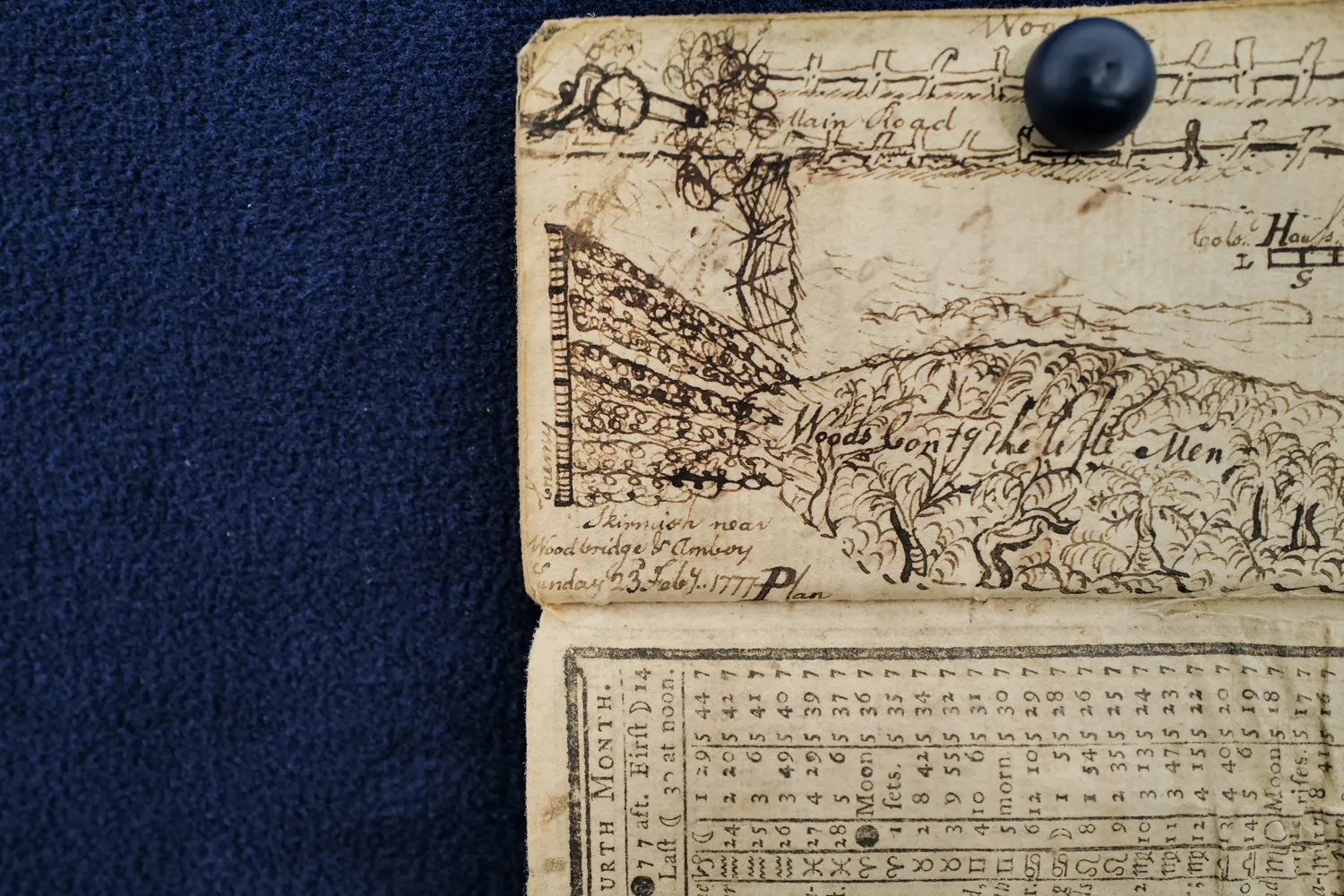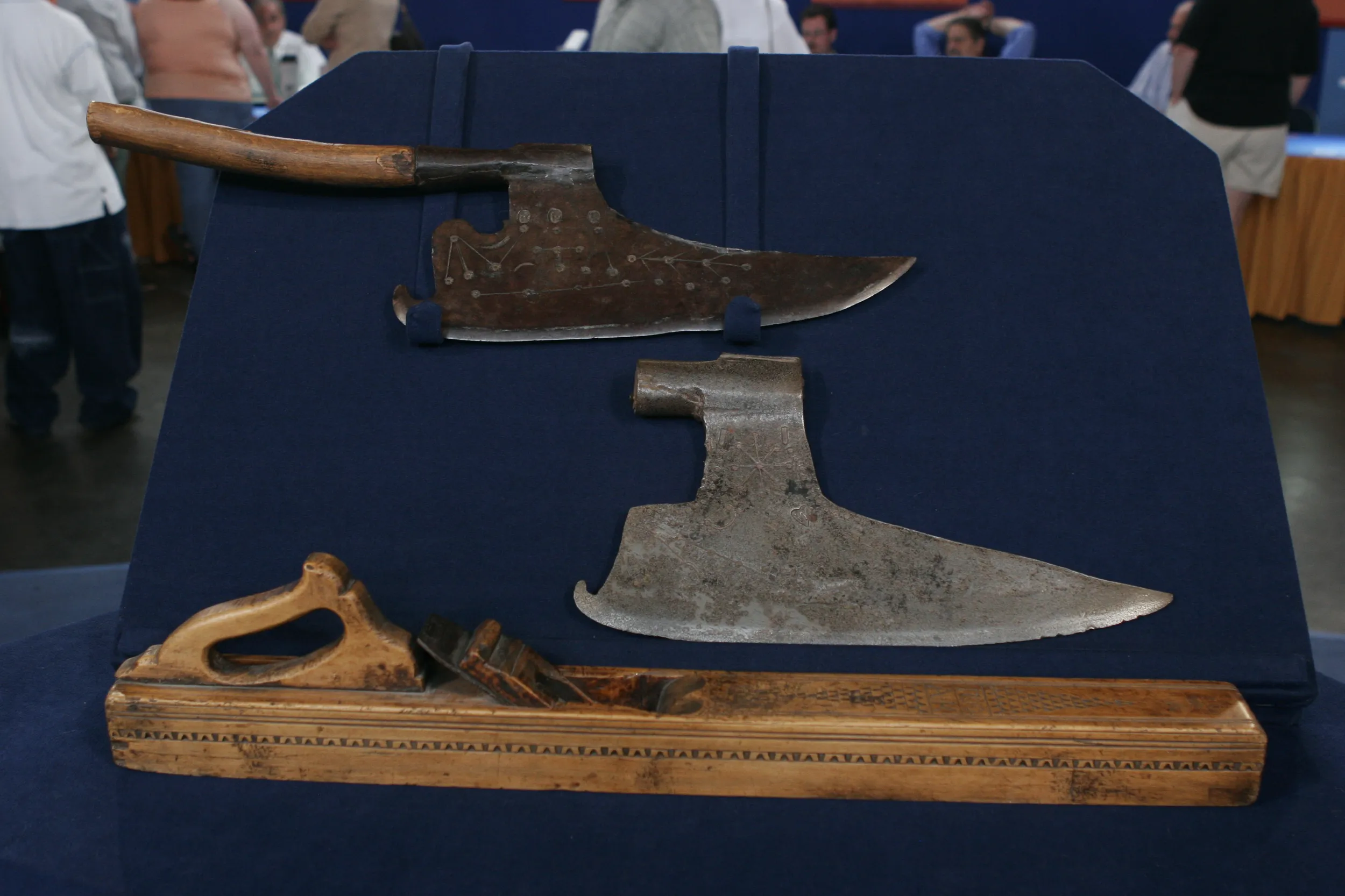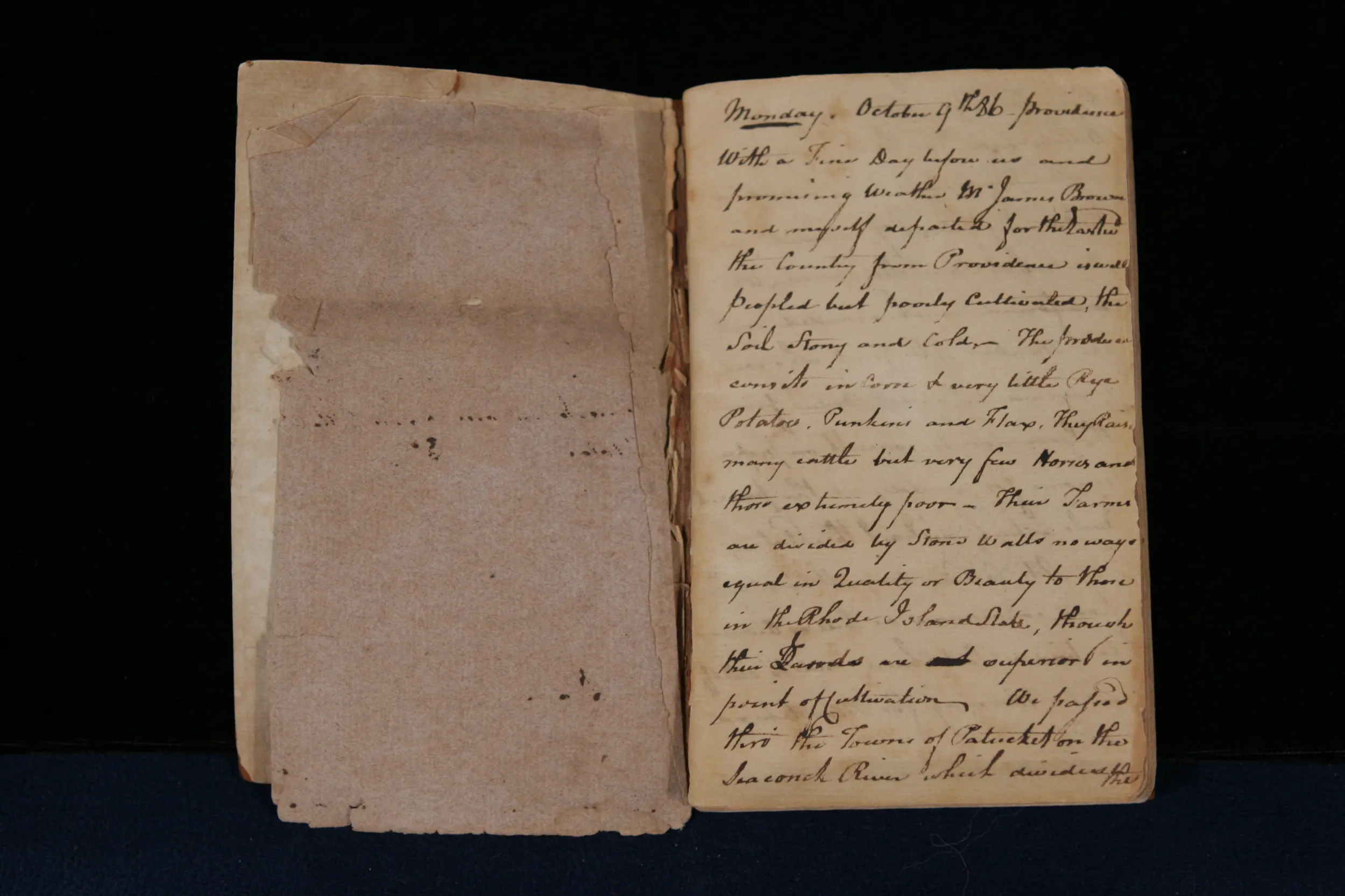Lt. Samuel Gerock Revolutionary War Archive
GUEST: It's a Revolutionary War drumhead. I first found out about it probably when I was a teenager. My grandmother had it in her house, on the back porch in a closet. It says on it it's, "This little wallet is made from a drumhead from the Battle of Trenton," and it belonged to my great-great-great- whatever-grandfather, who was in the, um, German regiment fr, out of Baltimore, Maryland. So I saw it a couple of times then. My mother is an only child, so she got it when my grandmother died. Then we sort of lost track of it a little bit...
APPRAISER: Mm-hmm.
GUEST: ...after my mother died. My father didn't remember about it, and so my brother and I searched through the house and found it in a box in a box in the closet. And so I've had it for the last several years.
APPRAISER: Archives like this from the revolution you don't see that often, and specifically from this campaign. Lieutenant Samuel Gerock was your ancestor. Um, he was born in Lancaster, Pennsylvania, in 1754. At some point, he moved to Baltimore, Maryland, area, probably because of his father's work as a, as a minister. He joined the German battalion, which was comprised of men from Pennsylvania and Maryland who were of German ancestry. And as you said, he was at the Battle of Trenton, which was one of the first great victories of the revolution for George Washington, uh, when he crossed the Delaware and, and captured the German troops, the Hessian troops, that were in Trenton, and these guys were German troops that were fighting on the other side. He was at the Battle of Princeton. You've got some letters, um, from his officers to him and his family. You've also got some receipts, and some of those date from '76 all the way through about 1786. So you've got some that are just postwar. And you've got this great almanac here.
We've positioned the almanac like that so you can see the printed almanac page, which is sideways, but that sketch he did of the Battle of Woodbridge and Amboy in February 1777 is upright, so that you can see the cannon, fence lines, the main road. You can see the wood line, with the, uh, riflemen who were positioned in there during the battle, which is really cool. I've never seen another depiction of that battle before. Also in that book, in between the printed leaves of the almanac, are, uh, notes of his-- he kept a diary in between. So this is really cool. Um, it's a drumhead for sure, made out of calfskin. And the early rope-tension drums they would have been using would have used this head. And when it got wet, with the heavy drumsticks, it could have punched a hole in it. So it looks like he repurposed it into a wallet by cutting it out. And then he wrote in it where that drum was used, at the Battle of Trenton, uh, Princeton, and throughout the Jerseys during '76 and '77. It seems in 1777 to '78, he ended up with rheumatism and went home for a while. So he was out of the Army for a little bit, and then he ended up back in the Army as an artilleryman in a place that was known around the War of 1812 as Fort McHenry. So he was stationed at that fort during the Revolutionary War.
GUEST: Really!
APPRAISER: It wasn't McHenry at the time...
GUEST: Yeah.
APPRAISER: ...but, um, that's what it became. 1784 is when he moves to New Bern area of North Carolina...
GUEST: Right.
APPRAISER: ...and had a successful business. He was a postmaster. He was, worked in the bank. And in 1818, he applied for a pension. And that's a great place to find out information about these folks, if a pension was applied for. And luckily for us, he did, in that all of these documents are mentioned.
GUEST: Oh, good.
APPRAISER: So during that time period, in order to get a pension, you had to prove that you were in the service. And sometimes they had muster rolls that would show you were in, and sometimes they couldn't find those muster rolls. Um, and one of the things that he presented, um, to the local court to prove his service are these letters and the almanac, because they're described.
GUEST: Oh, okay.
APPRAISER: And I think I can read that description.
GUEST: Okay.
APPRAISER: So on April 15, 1818, when he applied for the pension, one of the, uh, court officers wrote this down in his pension application, and it says, "He has laid before me sundry papers bearing the evident stamp of authenticity, which are, in
themselves, sufficient to enforce a like pension. He has shown me an interleaved almanac for the year 1777," which is right here... (laughs) ..."in the blank leaves of which he kept a diary. And he noted the services he performed. Also several letters addressed to him as a lieutenant of the company of Captain Keeport, and several receipts recognized him in his military capacity, signed by the colonel of the regiment, Nicholas Haussegger." And that's what you have right here.
GUEST: Yeah. (laughs)
APPRAISER: So one of the cool things is, is that we know these existed, and these are real, too, uh, because they were used to apply for the pension in 1818.
GUEST: Right, wow.
APPRAISER: We feel that for the group, a conservative auction estimate would be in the $10,000 to $15,000 range. For an insurance appraisal, we would probably say in the $20,000 to $25,000 range.
GUEST (chuckling): Wow.
APPRAISER: Yeah. Yeah, very cool stuff.
GUEST: Wow.
APPRAISER: Yeah, things you don't get to see every day.
GUEST: Yeah-- great, good.

$10,000 Auction
$25,000 Insurance
Photos


Featured In

episode
North Carolina Museum of Art, Hour 1
ROADSHOW heads to Raleigh in search of treasures at the North Carolina Museum of Art!
18th Century

appraisal

appraisal

appraisal

appraisal
Understanding Our Appraisals
Placeholder


